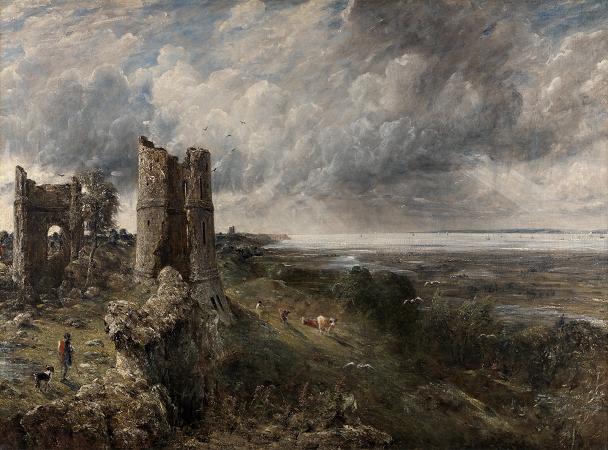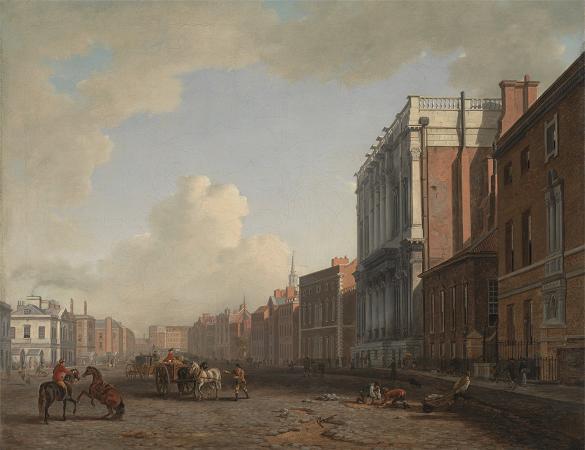Landscape. Landscape art is the depiction of natural scenery, often emphasizing the beauty and grandeur of the natural world. It has been a popular subject in art for centuries, evolving through various styles and movements. Landscape painting emerged as an independent genre during the Renaissance, with artists like Claude Lorrain and Nicolas Poussin creating idealized paintings inspired by classical mythology and poetry. The Romantic movement of the 19th century further elevated landscape painting, with artists like J.M.W. Turner and John Constable capturing the dramatic power and emotional impact of nature. Impressionism in the late 19th century revolutionized landscape painting by focusing on capturing the fleeting effects of light and atmosphere, as seen in the works of Claude Monet and Camille Pissarro. The Great Wave off Kanagawa by Katsushika Hokusai captures the immense power and beauty of nature, showcasing the dramatic waves of the Pacific Ocean. Caspar David Friedrich's Wanderer Above the Sea of Fog depicts a solitary figure standing on a clifftop, gazing out at a vast, misty landscape. It symbolizes the individual's connection to the sublime and the infinite. The Water Lilies series by Claude Monet showcases Monet's Impressionist style, focusing on the changing effects of light and atmosphere on a pond filled with water lilies. Wooded landscapes have been a source of fascination for artists. Forests can be portrayed as lush and inviting, or mysterious and even menacing. The Hudson River School painters frequently included grand forests in their works. Cityscapes capture the urban environment, with buildings, streets, and people, they can be bustling and energetic, or focus on the quieter aspects of city life. Canaletto was a prominent Venetian painter known for his detailed cityscapes. Pastoral landscapes focus on idyllic scenes of shepherds tending their flocks in peaceful settings. A river landscape showcases a river as its centerpiece, along with the surrounding environment and the possibility of boats or people on the water. Desert landscapes portray arid regions with dramatic rock formations, cacti, and sparse vegetation. Atmospheric landscapes focus on the effects of weather and light on a scene, rather than specific details of the landscape itself. Some landscapes depict scenes from mythology or religion, often featuring gods, goddesses, or fantastical creatures placed within natural settings. Landscape painting is a genre of fine art that depicts natural scenery, such as mountains, valleys, forests, rivers, and seas. During the Renaissance, landscape painting emerged as a way to depict the natural world in a more realistic and detailed manner.
more...














